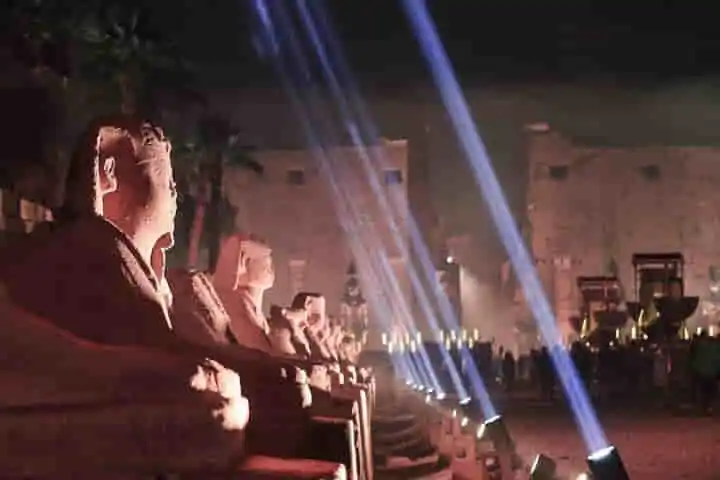Egyptian authorities unveiled on Thursday a renovated ancient promenade in the city of Luxor dating back 3,000 years as part of a project to highlight the country’s archaeological treasures that are a major attraction for tourists.
The ancient walkway — known as the Avenue of the Sphinxes, but also called the Way of the Rams and the Path of the Gods — connects the famous Karnak and Luxor temples, which used to be Egypt’s capital in ancient times. It is believed to have been the path that pilgrims took to pray at the temples and has been under excavation for more than 50 years.
Lined with statues of rams and sphinxes on pedestals, the ancient road in Luxor, on the banks of the Nile, stretches for several miles and is located about 650 kilometers south of Cairo.
Egypt has struggled to revive its tourism industry amid the political turmoil in the current following the deposing its autocratic ruler Hosni Mubarak in 2011. The coronavirus pandemic has also taken its toll as is the case with other tourist hotspots in world.
President Abdel Fatah el-Sissi attended the glittering extravaganza that was broadcast on TV channels in a late evening ceremony along with other senior officials.
Mohamed Abd el-Badei, a top Egyptian archeology official, said the oldest ruins along the pathway are six structures built by Queen Hatshepsut, Egypt’s only woman pharaoh, that date to 1400 BCE, according to an AP report from Luxor.
He said that according to hieroglyphics on the walls of one of the temples, the ancient holiday was known as “Opet” and was marked by parades and dancers in celebration of the bounty that the Nile’s annual flooding brought to the fields. There was also a flotilla of sacred boats that made their way to the temple, according to the transcriptions.
Also read: 3,000-year-old ‘lost golden city’ unearthed in Egypt




















